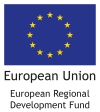Augmented Urbans improved urban planning
The Augmented Urbans project focused cooperation efforts on three important aspects of the urban planning: local participation and involvement of stakeholders, urban resilience and applying new technologies (XR).
1. CO-DEVELOPING OF PARTICIPATORY PLANNING PROCESSES AND INTEGRATED PLANS FOR URBAN RESILIENCE
Five integrated urban plans were co-created in the following local actions sites.
TALLINN. The diversity of bees and insects, of which over ten are protected species, inspired the urban planners to focus on pollinators as a central concept in the development of the urban area. Landscape architecture solution largely consisted of meadows and sustainable mobility options.
Important part of the urban planning was activating local community by gardening activities, organizing events.
AvaLinn AR application updated and tested. People can walk on site and point their phones on a mural and receive extra information about city plans for the future of the area.
- Read more on Tallin local action area: https://augmentedurbans.metropolia.fi/local-action-in-tallinn-estonia/
- Read more about the current developments on Tallinn local action area (maintained by B.Green project) https://www.putukavail.ee/?lang=en
VIIMSI. Project addressed challenges related to sustainable mobility, environmental resilience and access to public services of Viimsi as one of the fastest-growing municipalities in Estonia (namely Haabmeeme main street). Haabneeme Main Street vision and contributions for the Haabneeme Master Plan, stakeholder interactions were accomplished during the project. Also the survey made and 3D model, 360 visualisations and videos developed together with an interactive portal of the site for communicating the plan to local stakeholders.
- Visualisation platform of the Haabneeme General Plan: https://haabneeme.viimsi.ee/
- Newsletter to the local inhabitants about the project activities in Viimsi: http://database.centralbaltic.eu/sites/default/files/Augmented%20Urbans_Viimsi_newspaper_2020_EST.pdf
- Read more about the Viimsi local action area: https://augmentedurbans.metropolia.fi/local-action-in-viimsi-estonia/
CESIS. A thematic plan for Gauja river surroundings was developed. Project contribution: a holistic approach of collecting environmental data of the biotopes, stakeholder inputs from a variety of stakeholder groups (both via events & online platform), innovation actions to find new business opportunities on-site and combining these into spatial concept designs by architect students.
- Read more about the Cesis local action area: https://augmentedurbans.metropolia.fi/local-action-in-cesis-latvia/
- Thematic plan of Gauja surroundings: http://database.centralbaltic.eu/sites/default/files/CESIS%20Thematic%20planning%20Gauja.pdf
HELSINKI. Teollisuuskatu outline plan and participatory methods for outline planning process previously undefined. Utilising three pop-up events, surveys and VR visualisations to facilitate stakeholder participation.
- Read more about the Helsinki local action area: https://augmentedurbans.metropolia.fi/local-action-in-helsinki-finland/
GÄVLE. Management plan for outdoors areas in Gavlegårdarna housing areas, and biodiversity supporting management practices that can be applied to the other properties as well. workshops and events with both tenants and outdoor maintenance personnel were organised, practical actions to engage tenants with their surroundings such as mini gardens, planting meadows, setting up bee hotels and habitats.
- Read more about the Gävle local action area: https://augmentedurbans.metropolia.fi/local-action-in-gavle-sweden/
While working with the planning, the project had active cooperation with students and universities. It was designed in a way that project-inspired challenges embedded within university courses, have facilitated collaboration between urban planners and students. The students have also participated in the project activities as interns with various project-related tasks.
The student involvement has provided Augmented Urbans with fresh ideas and perspectives. Student concepts are often not burdened by the conventions of designing certain things or the day-to-day procedures of the city administration.
- You can read more about this cooperation and the concrete out of box outcome in Cēsis, Gävle, Tallinn and Helsinki here: https://augmentedurbans.metropolia.fi/collaborating-with-universities/
2. URBAN RESILIENCE WITHIN PARTNER REGIONS AND THE CB AREA
Project partners had special focus on resilience aspects in 7 local sites. The aim was to develop the Matrix of Indicators which would make the concept of resilience more comprehensible and applicable to planners. The matrix was developed to be used more as a pedagogic tool to identify resilience-thinking and sustainability values in each Local Action site and bring those forward for joint discussion to crystallise the policy recommendations.
The final version of the Matrix of Indicators consists of the seven resilience principles where the users are asked “Do the plan and process address the seven principles and how?”. Secondly, users are asked to fill out the four sustainability dimensions by describing the following aspects:
- factors & planning actions that support sustainability,
- unsustainable factors and
- remaining questions.
By pointing out unsustainable factors, it is possible to map out aspects that still need to be addressed in the future.
- More information on project experience working on this you can read here https://augmentedurbans.metropolia.fi/the-matrix-of-indicators-process-and-results/
- The fillable PDF version of the Matrix-of-Indicators can access here: http://database.centralbaltic.eu/sites/default/files/Matrix-of-Indicators-empty-fillable.pdf
3. INCREASING PLANNERS EXPERTISE OF XR AS A TOOL IN DEVELOPMENT FOR RESILIENT CITIES
The Augmented Urbans project has explored ways for extended reality (XR) technologies to support integrated urban planning. The current project has developed and tested twelve XR tools in seven Central Baltic cities and municipalities within this project.
Practice-based insights collected throughout the project; from its reports, workshop discussions and presentations by the partner urban planners and other experts are presented in the articles available here: https://augmentedurbans.metropolia.fi/augmenting-urban-planning-and-management/
The Augmented Urbans project focused cooperation efforts on three important aspects of the urban planning: local participation and involvement of stakeholders, urban resilience and applying new technologies (XR).


